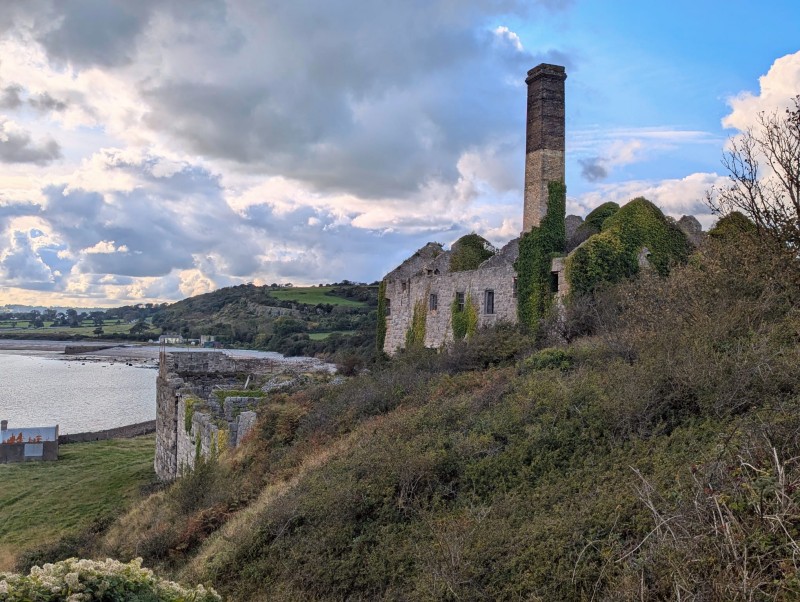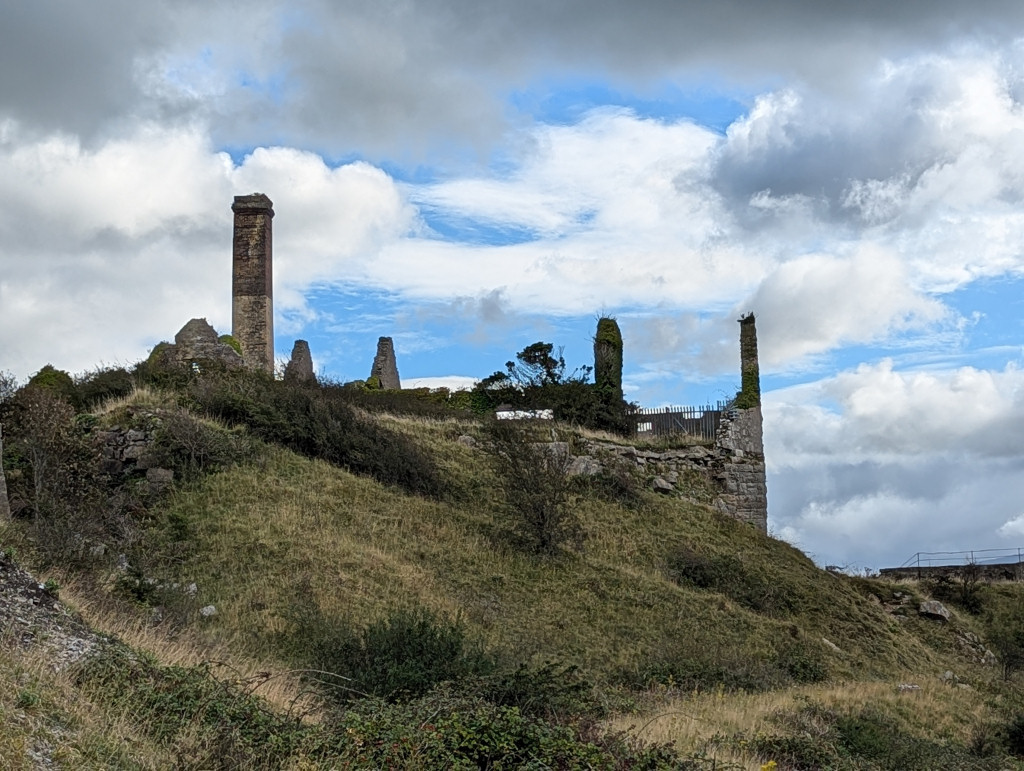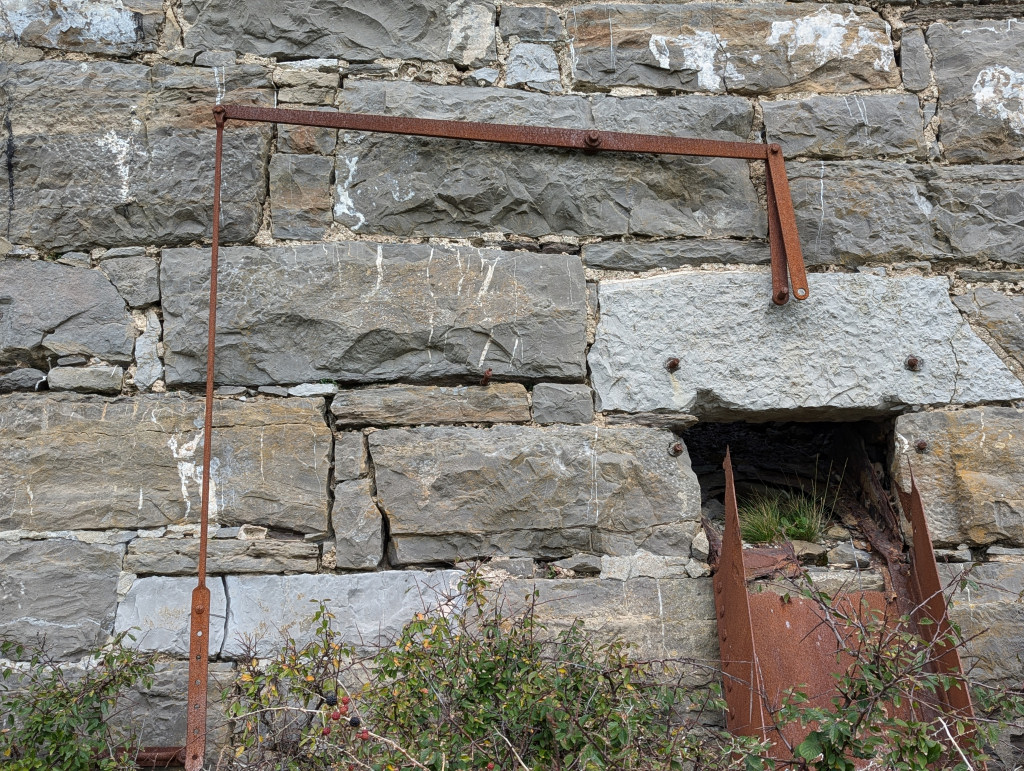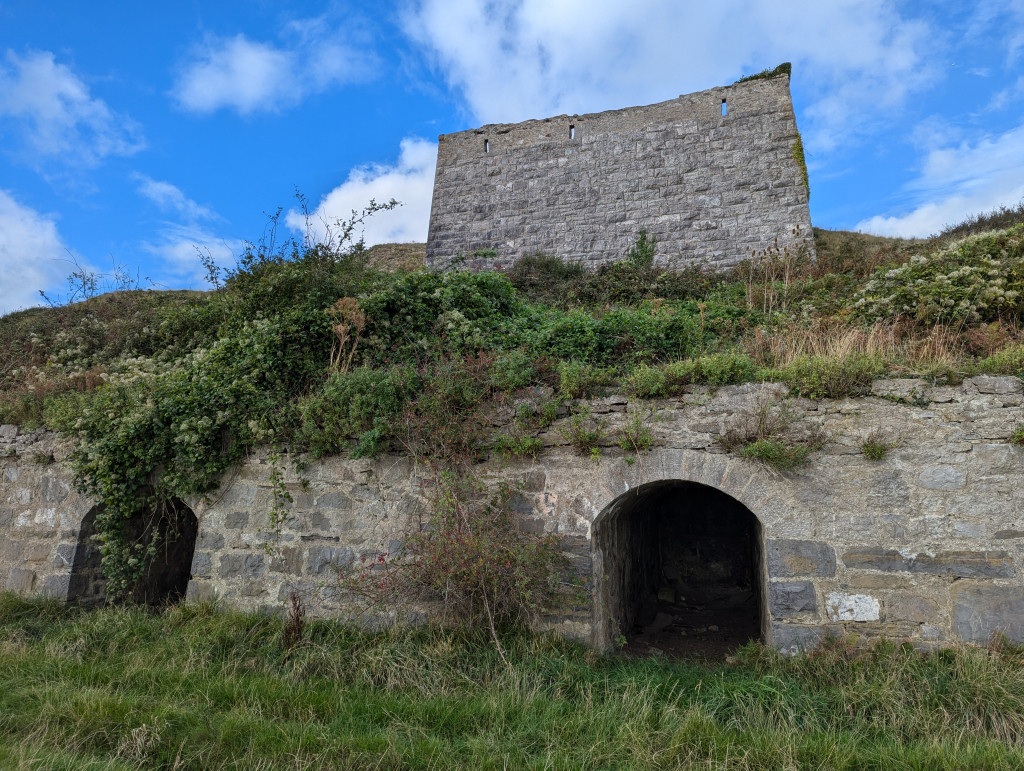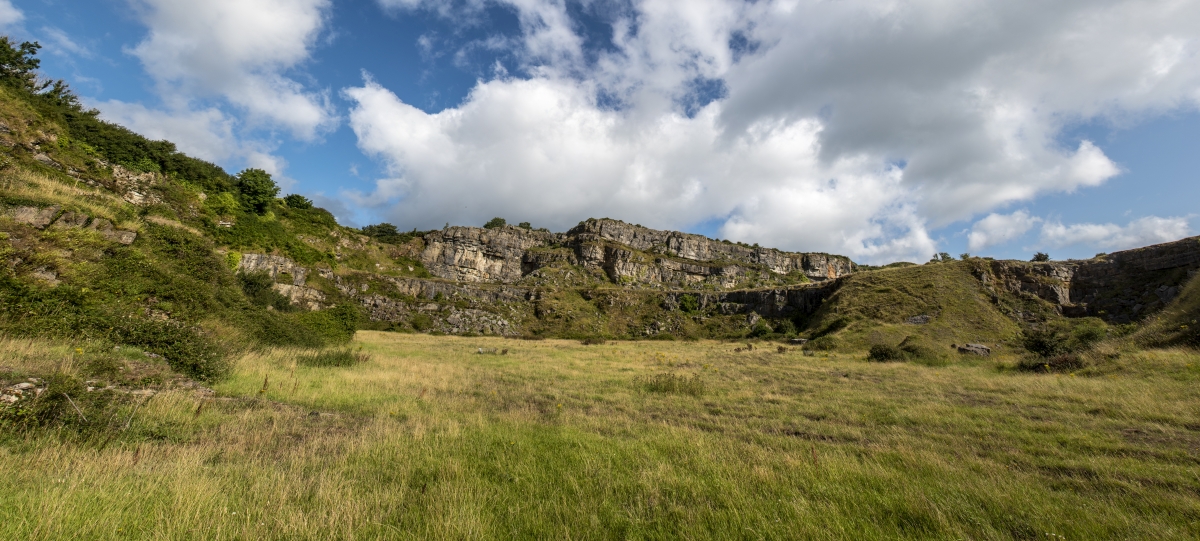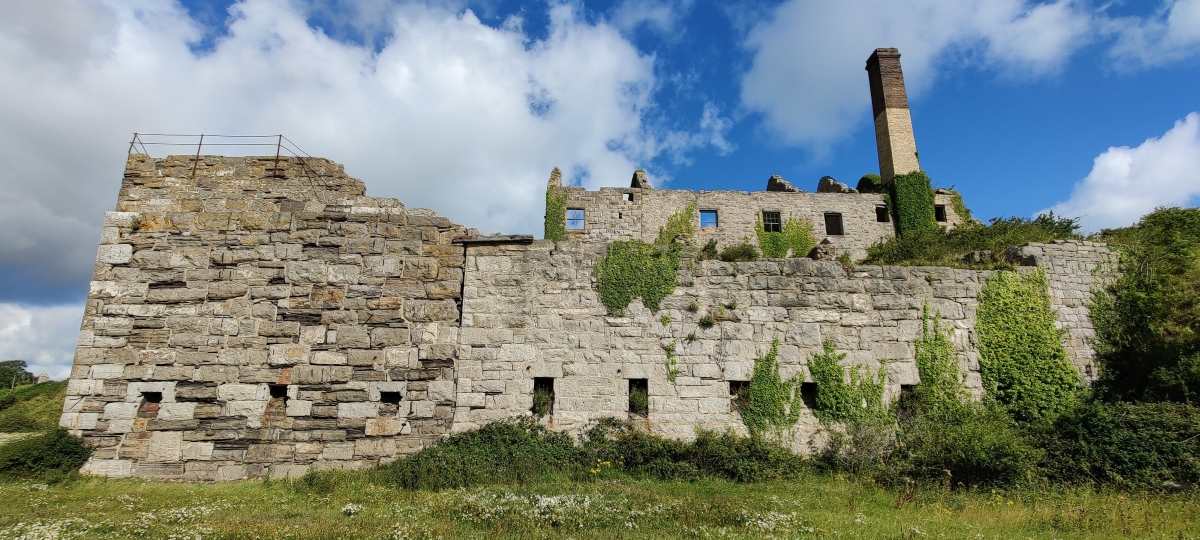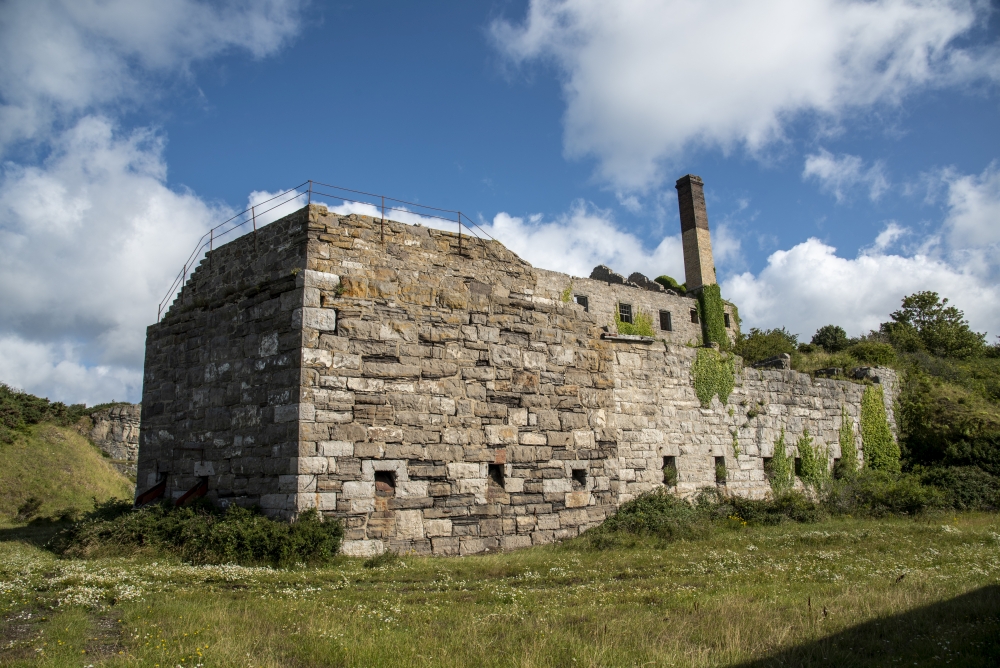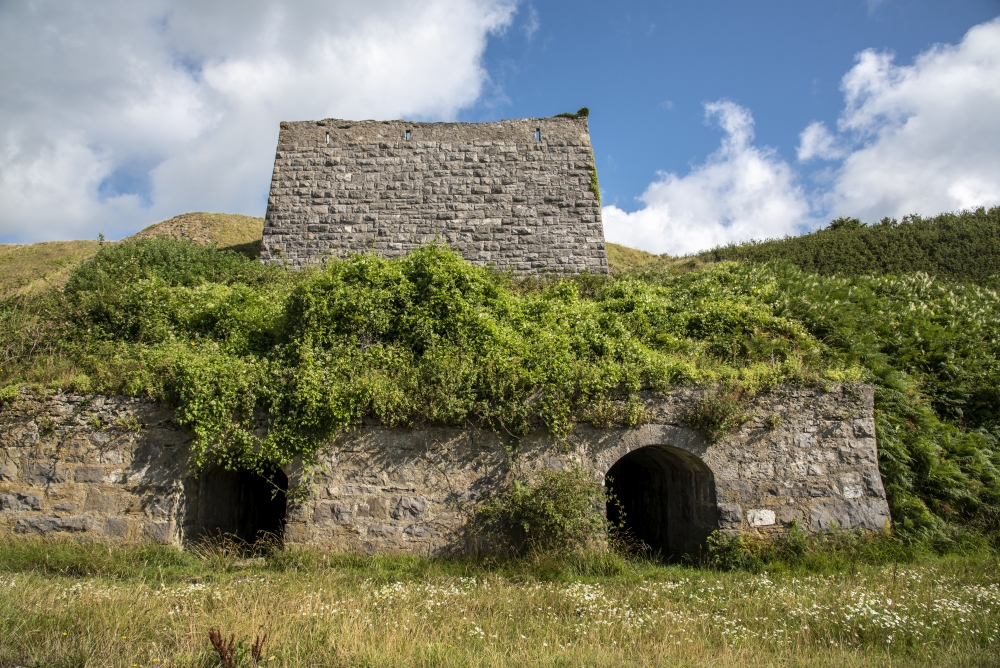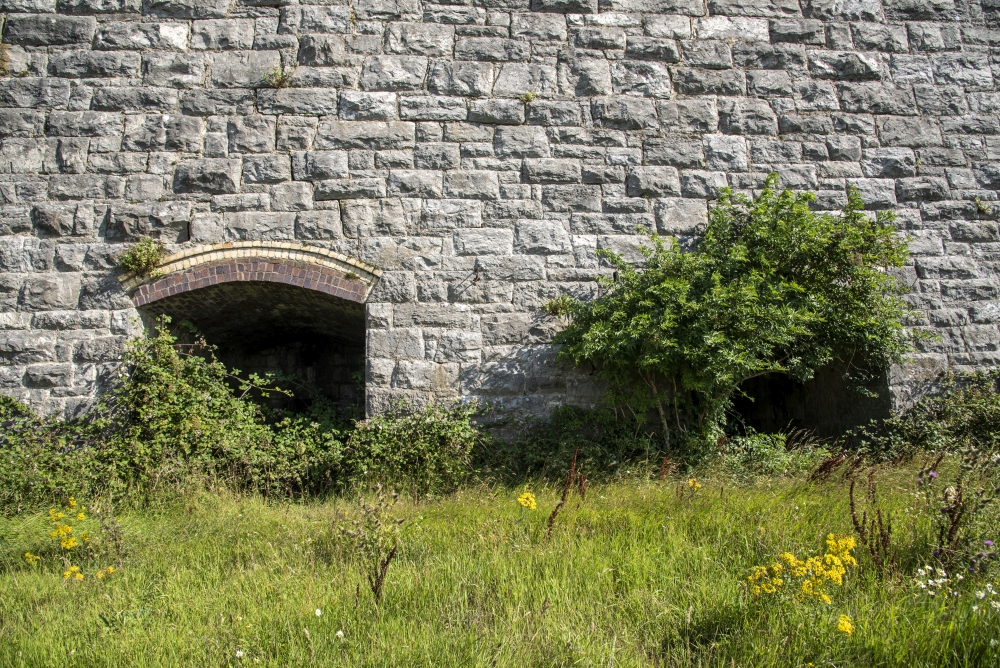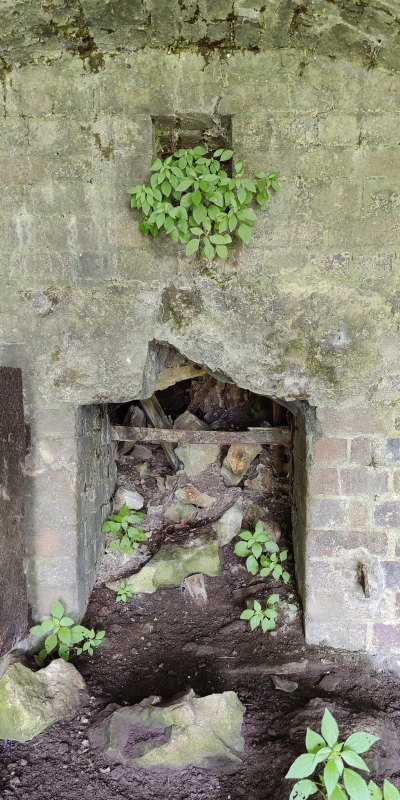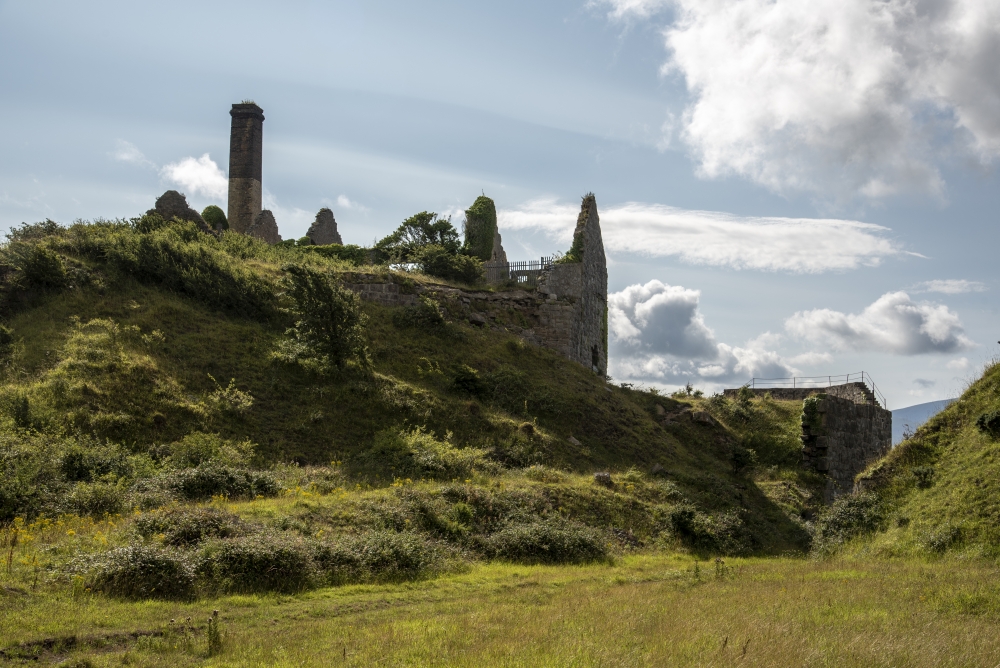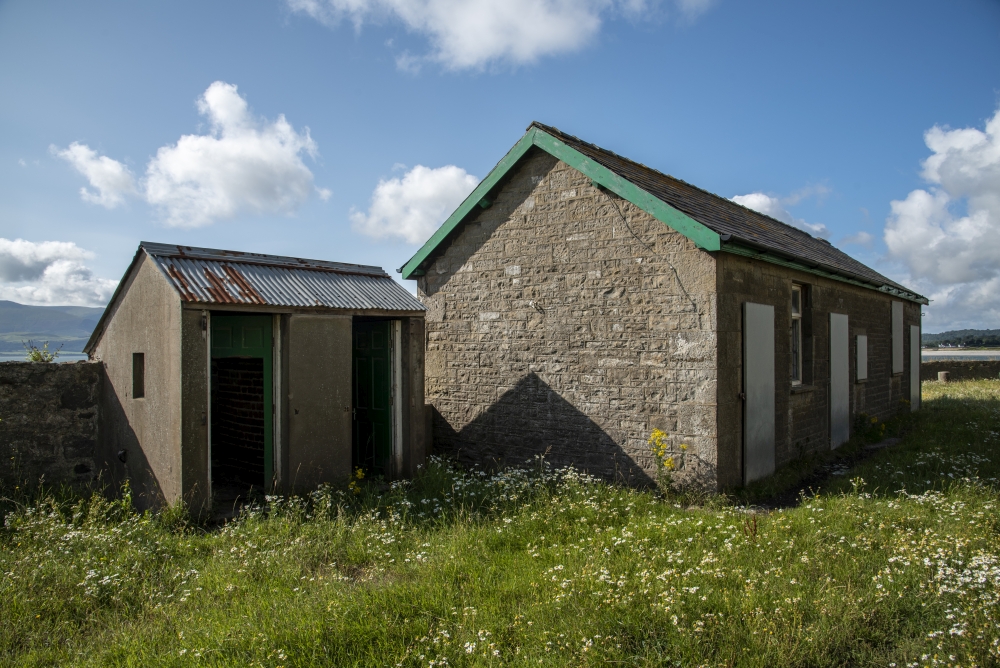Large quarry with large double-limekiln and crushing mill.
Other remains of buildings, and the ruins of a jetty.
Worked sporadically for lime and stone from 16C.
Main period of working was about 1874 to 1915 by which time the quarry had been extended to 11 hectares. In 1888, William Baird & Co took over and developed the quarry to produce fluxing stone for their Glasgow steelworks.
In the 1900s Dinmore Quarries Ltd worked the site, mainly producing burnt lime for agriculture and this continued until 1948 when the quarry shut.
Locked gate behind dovecote, but access can be gained relatively easily.
RIGS Site - Summary:
The comparison between Flagstaff Quarry and Tandinas Quarry reveals significant lateral facies changes within the early Asbian sequence of the Penmon peninsula, Anglesey. The Dinantian succession in North Wales records the growth of a carbonate platform during a marine transgression. At Flagstaff Quarry, distinctive porcellaneous limestones dominate the Flagstaff Member, which is underlain and overlain by dolomitised, oolitic, and skeletal grainstone, indicating high-energy barrier and low-energy back-barrier environments. These facies resemble those in the Llanarmon Limestone Formation, contrasting with the peritidal rhythms at Tandinas Quarry, reflecting differences in depositional settings across the region.
External Links
